This article contains major character or plot details.
Who’s the real monster in Monster:The Ed Gein Story? There are quite a few options — with both the viewers, and society at large, included. “The interesting thing about the show is the thesis statement of every season is: Are monsters born or are they made?” co-creator Ryan Murphy asks. “And I think in Ed’s case, it’s probably a little of both.”
As the story of Wisconsin serial killer and grave robber Ed Gein (played by Charlie Hunnam) unfolds, the stories inspired by Gein’s crimes begin to bleed through into the main narrative. This inclusion of characters like Alfred Hitchcock (Tom Hollander) is crucial to the story Murphy and co-creator Ian Brennan are telling. As they portray it, the media that Gein watched and consumed informed his deadly pursuits.
“This whole series, it turns the camera right on us,” Brennan tells Tudum. “It really matters what you look at and the images and stories you consume. They do stick with you, and they do have an impact.”
“Who was the monster? This poor boy who was abused his whole life then left in total isolation, suffering from undiagnosed mental illness?” Hunnam asks Tudum. “Or the legion of people who sensationalized his life for entertainment and arguably darkened the American psyche and the global psyche in the process?”
The answer, as it turns out, may be all of the above. Monster: The Ed Gein Story tackles every aspect of Ed Gein’s life: his abuse at the hands of his mother, Augusta Gein (Laurie Metcalf), his fascination with Nazi war criminals, his grisly crimes against the women of Plainfield, Wisconsin, and finally his incarceration and diagnosis.
“He really contained these multitudes of tone and subject matter,” Brennan says. “We left no stone unturned. We really painted as big of a picture as we possibly could have.”
Read on to dive into the story of Monster: The Ed Gein Story.
What was Ed’s relationship with his mother like?
In the show, Gein’s first victim comes early in his life, when he hits his brother Henry (Hudson Oz) over the head, killing him accidentally. He covers his tracks with a fire to avoid blame, but Henry’s death breaks his mother’s heart and damages her already rocky relationship with Ed.
Augusta’s resentment forms a lingering rift that defines nearly everything about Ed. “He was this bizarre guy that lived in his own world, in his own reality, in total isolation with only one other point of contact,” Hunnam says. “And so everything in his life was sort of made up, was a work of his own creation.”
Even Gein’s voice felt inspired by this formative relationship. “It was an affectation, it was what Ed thought that his mother wanted him to be,” Hunnam adds. “It wasn’t an authentic voice that lived in him. It was this persona, it was this character that he was playing because his mother desperately wanted a daughter, and she was given a son. In her more hostile, vile moments, she would tell him, ‘I should have castrated you at birth.’ ”
The voice Hunnam chose for his interpretation was inspired by an obscure source: an audio tape of Gein himself upon his arrest, which only Hunnam was able to listen to. “The tape has never been released because they didn’t read Ed’s Miranda rights before they conducted this interview,” Hunnam says. “So it was always thought that that tape would be inadmissible.” Hunnam was able to help track down the tape, which served as a valuable source of inspiration for his mumbling, shuffling interpretation of Gein, a killer who fades into the wintry background of his rural Wisconsin town.
After his brother’s death in the series, Ed is soon left alone for good when his mother succumbs to illness and passes away. Missing his mother, Ed tries to dig her up — but settles for another corpse. Gein’s grave robbery was far more prolific than his killing; he used dried skin to create furniture, lamps, and more. A drawer of dried vulvas is one of the most disturbing images in the series. And things are only about to get darker.
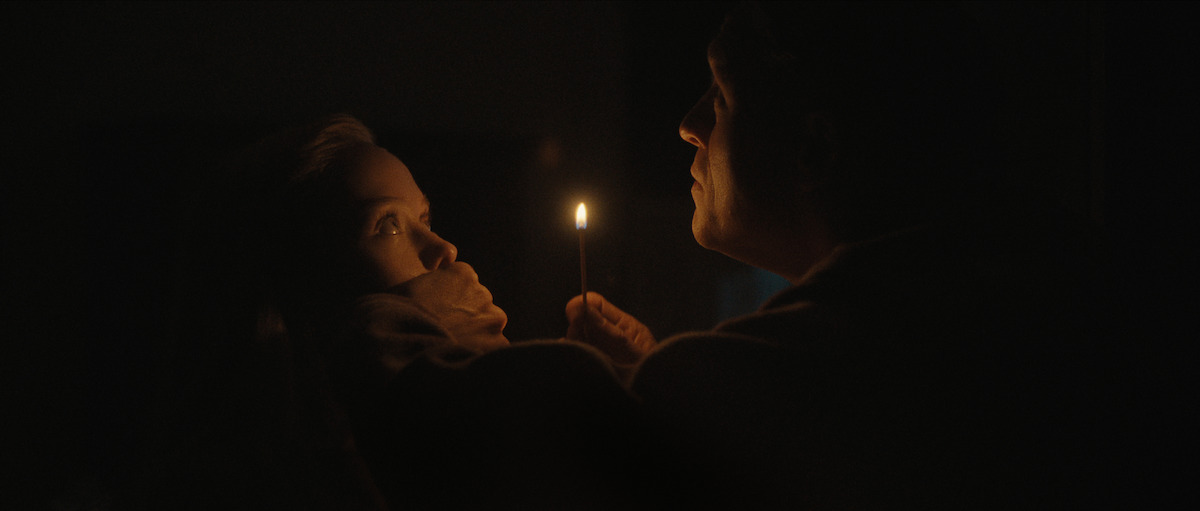
Is Adeline real?
Ed’s only remaining comfort is Adeline Watkins (Suzanna Son), a neighbor and occasional girlfriend who continues to linger in spite of his increasing oddness — at a certain point, she even joins him in his grave raiding. In fact, she’s so omnipresent that it’s worth asking: Is she real at all?
Adeline is based on a real resident of Plainfield, Wisconsin, but information about her is thin. “[What] we do know is that she came out at first talking about how they were an item, and they were going to get married,” Brennan says. “And then she came out like, ‘No, I made that all up.’ ”
Brennan and Murphy are aware that in a series so defined by Ed’s imagination, audiences may wonder if Adeline is a figment of his imagination; they even considered revealing exactly that in the final episode but decided it undid too much of the series’ emotion. “We talked about that a lot,” Brennan says. “To me, she is real.”
Fittingly enough, not even everyone involved in the production agreed on Adeline. “My interpretation was that she’s in a large part a fantasy of Ed’s,” Hunnam says. “He finds, whether in reality or in his mind, this sort of kindred spirit with Adeline, somebody who can relate and to understand these primal urges and instincts that he has.”
Adeline plays a crucial part in introducing Ed to some of the sordid fantasies that would come to dominate his life, including his fascination with Nazi war criminal Ilse Koch, the “Bitch of Buchenwald.” Played by Vicky Krieps in fantasy sequences, Koch inspires Ed to skin his victims and use them for furniture. Adeline also finds herself changed by this knowledge; she heads to New York to try to work with famous crime scene photographer Weegee (Elliott Gould), but is rejected.
“She gets to touch on the central theme of the show, which is, ‘Be careful what you look at and be careful what you watch,’ ” Brennan says. “Images can be corrosive and they can stick with you and change you. And we, along with Ed, we sort of watch her go down a rabbit hole into something quite dark and quite scary.”
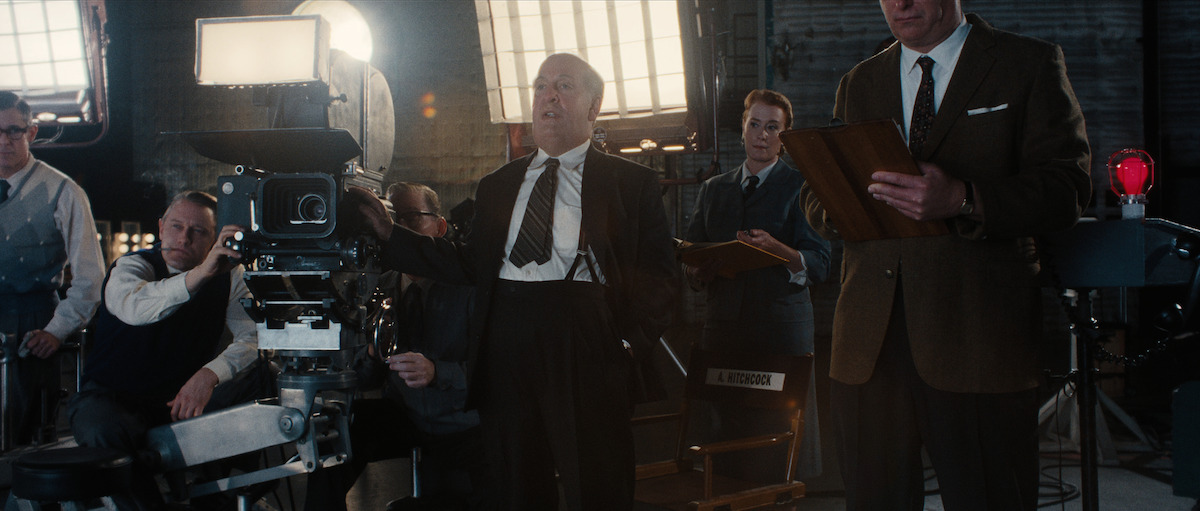
Was Alfred Hitchcock’s Psycho inspired by Ed Gein?
Yes, Hitchcock’s seminal horror classic Psycho was inspired by Gein’s crimes, and Monster: The Ed Gein Story dives into this connection.
In the series, Ed kills local bartender Mary Hogan (Rondi Reed), telling her she reminds him of his mother. It’s no accident that the same episode introduces the parallel story of Hitchcock, whose film Psycho was based on Robert Bloch’s novel of the same name. Bloch used the circumstances of Gein’s murders as a jumping-off point for Psycho; the film, by extension, was also inspired by the Plainfield Ghoul.
This element of Gein’s story, his long-lasting pop culture influence, is part of what attracted Murphy to the material. “He is probably one of the most influential people of the 20th century, and yet people don’t know that much about him,” says Murphy. “He influenced the Boogeyman and Psycho. Norman Bates was based on him. He influenced The Silence of the Lambs. He influenced The Texas Chain Saw Massacre. He influenced American Psycho.”
Monster shows us Hitchcock’s casting of Anthony Perkins (Joey Pollari), a young man struggling with being a closeted gay man in 1950s Hollywood. It also gives us a glimpse at the Master of Suspense’s bravura marketing campaign for Psycho — theaters were urged not to allow anyone in after the film had started, complete with a standee (re-created in the series) showing Hitch pointing at his watch and warning audiences not to be late.
All of this is in service of Murphy and Brennan’s larger goal for this season of Monster: depicting the birth of America’s fascination with serial killers. “There’s something about this story that has really echoed down the ages,” Brennan says. “Just thinking about how influential he was on movies. That’s when it sort of clicked.”
Hunnam cites Psycho specifically as a turning point for the horror genre. “Prior to Psycho coming out, monsters [in movies] were werewolves and Dracula and Frankenstein,” he says. “They weren’t your next-door neighbor. They weren’t the person working in a hotel that might have a key to your room, to come in at night. It was a complete reimagining of the horror genre.”
As the series continues to document Ed’s crimes, it also allows the parallel story of his other future influences to unfold. First, we meet Tobe Hooper (Will Brill), struggling with violent visions and working on a film called The Texas Chain Saw Massacre. The series posits that Hooper’s Leatherface was inspired by family tales of Gein’s killings, and specifically by the murder of two hunters (Patrick Scott Lewis and Ira Amyx), a crime that was never definitively linked to Gein.
Then, we see behind the scenes of Jonathan Demme’s Oscar-winning The Silence of the Lambs, as actor Ted Levine as Buffalo Bill (Golden Garnick) dances to “Goodbye Horses” by Q Lazzarus. Ed’s twisted costume, made from the flayed skin of his victims, served as one of the inspirations for author Thomas Harris’ conception of Buffalo Bill.
The final episode even ties in a fellow Netflix original, with location cards that pay homage to Joe Penhall and David Fincher’s Mindhunter, the beloved series that followed FBI profilers interviewing killers of their own. “We wanted to underline the last thing tonally that through Silence of the Lambs, he really influenced Mindhunter as well,” Brennan says. “That would be a fun way to put a cap on it, to use this other filmic vocabulary and then talk about the ways that he was part of those early days of FBI profiling.”
Before that can happen, of course, Ed has to be caught.
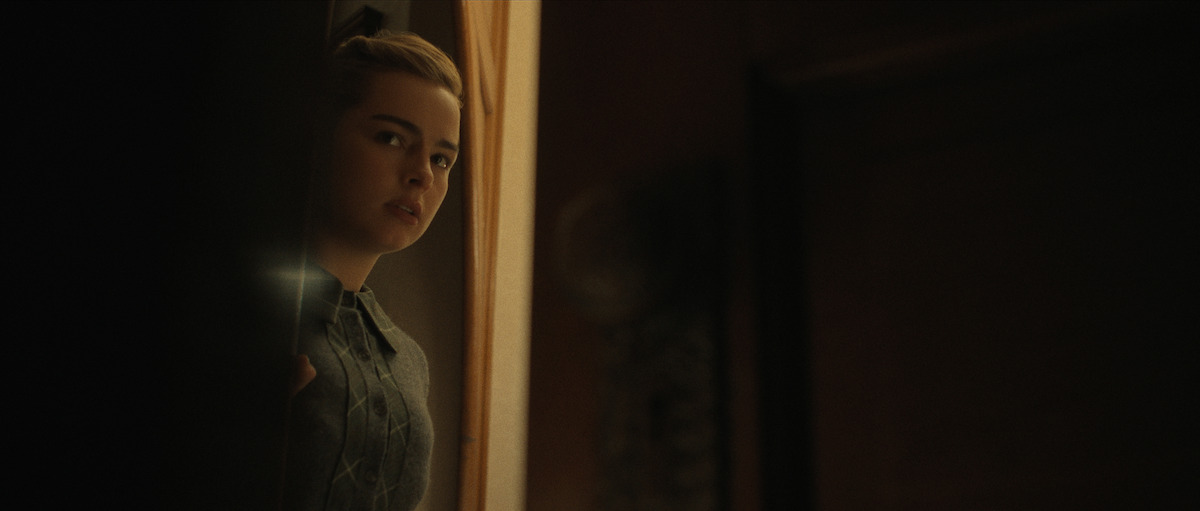
How is Ed arrested?
Ed gets several chances to take an off-ramp from his crimes — for example, when Adeline accepts his proposal of marriage and suggests he take a babysitting job to grow accustomed to the idea of having children. Instead, he frightens the children by showing them his house of horrors and is replaced by a kind young woman named Evelyn (Addison Rae), whom he promptly kills in an act of vengeance. In reality, Evelyn’s death was never solved, although Gein was question regarding her disappearance.
While Evelyn’s death is rather harrowing, filming the sequence was completely the opposite, says Rae. Throughout the entire process, Hunnam constantly checked with Rae to make sure she was OK. “Charlie is such a professional,” she tells Netflix. “He just wants everyone to feel supported and comfortable, especially in such vulnerable scenes that feel so intense … He made sure there was an end to those moments that didn’t feel so intense. It’s not like we would cut and he would go into his own place. He was just so attentive and sweet.”
In fact, there were even some moments of levity. “His stomach growled while we were doing that scene, and I just remember we both laughed, and we were just like, ‘That needed to happen,’ because it’s nice to have a little bit of a break,” says Rae. “It feels nice to have a little giggle in those moments and feel comforted, and safe, and not afraid.”
Later on, Ed begins a romance with local shopkeeper Bernice (Lesley Manville). Bernice is open to exploring Ed’s quirks and her own sexual kinks, but Ed soon finds himself hallucinating Augusta, and he kills Bernice as well. It’s this final crime that brings law enforcement to his door: Bernice’s son (Charlie Hall) is the local deputy, and is obviously horrified to find his mother’s flayed, decapitated body hanging in Gein’s barn.
As the show reveals, Ed’s state of mind may have kept him off death row. “I think Ed liked Bernice Worden enormously,” Hunnam says. “In reality, he would find any excuse to go and see her and visit her at the store. I’m fairly certain that Ed didn’t know what he was thinking when he was doing those things. It was just in a manic state.”
The judge in Ed’s trial agrees and sends him to a mental institution rather than prison. There, Ed lives out his days in relative peace — albeit with a few remaining fantasies. Via a ham radio, he imagines himself communicating with Ilse Koch, the woman who, from a distance, helped start Ed down the road toward monstrosity. “He makes sense as a person and a subject matter only in the context of the Holocaust really,” Brennan says. “It was those images that got stuck in his head that he couldn’t unsee.”
Ed’s ham radio also allows him to “get in touch” with another long-standing fascination of his: Christine Jorgensen (Alanna Darby), the first widely known person to undergo sex reassignment surgery in the United States. Ed has become convinced he himself is transgender, wearing the skin of his female victims just as Buffalo Bill would in The Silence of the Lambs. But, as Jorgensen tells him, Ed is not transgender but instead is gynephilic — a man who’s so aroused by the female body that he wants to be inside it.
It’s a distinction the show’s creators felt was necessary to make, given continuing misinformation about transgender violence. “It was really important for us to make that distinction, for us to say, ‘Look, these are two very different things,’ ” Brennan says. “And it was cool to be able to put it in the mouth of Christine Jorgensen. For him to be told that through her in his mind was a really cool moment.”
While researching Ed’s history, Murphy and Brennan learned that Ed actually had a ham radio while he was institutionalized. That discovery inspired the ham radio “gimmick,” to borrow Murphy’s word, in Episode 7. “[We thought,] this is a perfect way to dramatize his relationships with all of those women,” says Murphy, “and have those conversations be the catalyst that led to his realization of who he was and what he did, and what their influence [was] on him.”
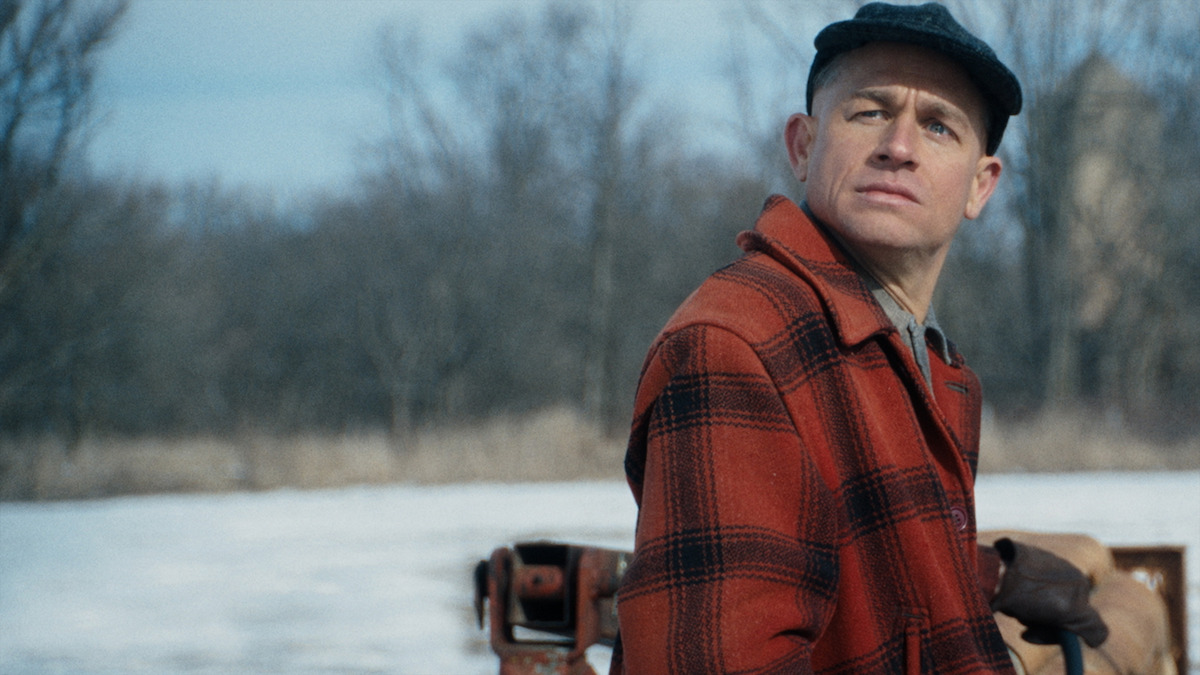
What is Ed’s diagnosis in Episode 7?
While in isolation in the mental hospital, Ed is finally diagnosed with schizophrenia, which gives him much-needed insight into why he committed the crimes and why he doesn’t remember committing them. “We always knew that we wanted to climax our story with our exploration of the nature of mental illness and how it had affected Ed,” Hunnam says. “If he had gotten the right treatment sooner, [the question becomes] if he would’ve ever done the things that he did. I really wept inconsolably reading that scene for the first couple of times.”
For Murphy, the entire season was building to Ed receiving this important diagnosis. “All eight episodes, I thought, depended on that scene. The miraculous thing about that episode was that the take that you see in that, of Charlie’s performance, is his first take, which he nailed,” says Murphy. “I think I called [Charlie] twice crying on the phone. I was so moved by what [he] had done.”
Filming the series with the knowledge that Ed had schizophrenia gave Hunnam valuable insight. “He really lived in that world, and the parameters and fantasies of that world were as real to him as anything else,” Hunnam says. “It was just his reality. Those manic episodes were the experience he was having, just like anything else.”
Murphy and Brennan were drawn to Ed’s story in part because it gave them an opportunity to have a specific conversation about mental illness. “I was very interested in society’s obligation to the mentally unwell, people who are having mental crises,” says Murphy. “Ed was the perfect person to talk about that because when he was apprehended, he [was] very quickly diagnosed, and he was given great care by a society. He was taken to different hospitals. He was treated well. He was given the correct medications.”
“We used to be a country that took care of our mentally unwell. There were systems in place. There were hospitals. There were sanitariums. We explore how that has degraded in our country,” Murphy continues, noting how funding for mental health services has decreased over the years. “What I love about [Episode 7] is it shows people how it can be: how it can actually help generations of people — and then what happens when that money is taken away.”
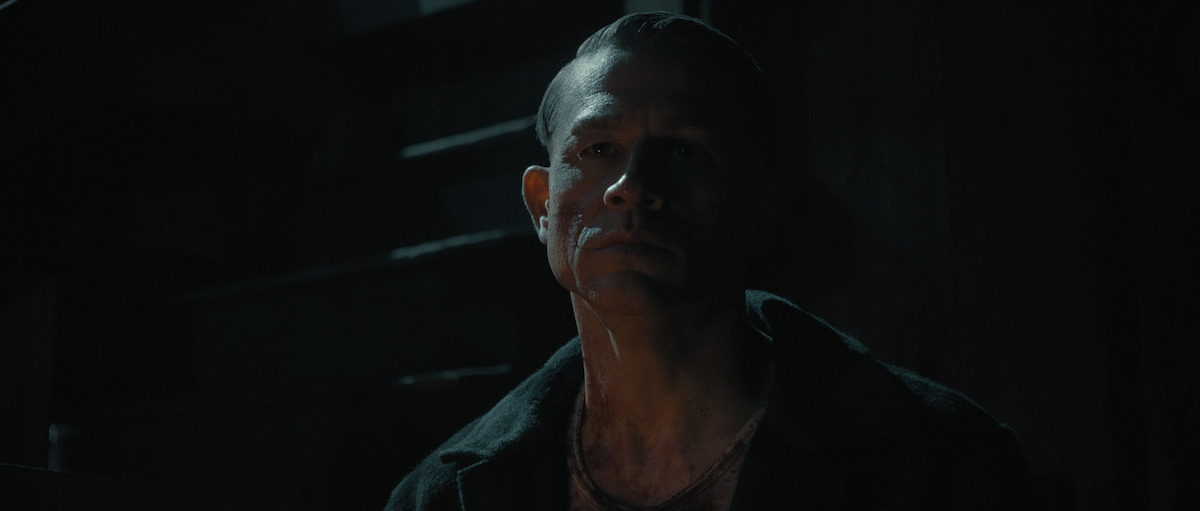
What happens to Ed at the end of Monster: The Ed Gein Story?
In the final episode of the series, Ed’s fantasies have taken a turn. Rather than being violent and upsetting, they show him helping FBI agents catch Ted Bundy (John T. O’Brien), a delusion that the hospital nurses take in stride. Ed, sick with cancer, meets Adeline one final time. She tells him she’ll carry on his work, kill people, embrace her inner darkness. Surprisingly, he asks her not to and leaves, a far cry from their previous dynamic.
There was a brief moment when Murphy and Brennan imagined Ed would be visited by someone else entirely in the concluding episode. “The finale of this show was [originally] called ‘Momma’s Boy.’ That was going to be the brilliant Laurie Metcalf visiting [Ed] in the asylum,” says Murphy, explaining that they realized that might not have been what Ed really wanted at that moment. “We quickly abandoned that and came up with the kind of All That Jazz tribute. And also we wanted to talk about, yeah, it was a dark legacy. There were many, many dark creatures in our world — Richard Speck, Ted Bundy — who were influenced and obsessed with Ed for all the wrong reasons.”
Toward the end of his life, Ed sees a vision of the many killers he inspired ushering him down a long hallway and smothering him with praise. “It’s the most tonally challenging part of the show to me in that he’s not horrified by it,” Brennan says. “He sort of loves the fact that he made a mark.”
In a subsequent vision, on his deathbed, Ed moves past a crowd of dancing nurses and ascends a staircase where he’s greeted by his mother; his final moments sum up the series as a whole. “Augusta’s there sort of saying, ‘You really made something of yourself,’ ” Brennan says. “It’s a really interesting sort of atonal note that we hit at the end, which I think in a way is right, because we’ve been with him for so long, but he’s also a ghoul. He’s also this deeply strange man who did really, really dark things that changed our culture.”
The show’s final scene nods at that cultural influence, with a group of carousing teens trying to steal Ed’s gravestone — a concept drawn from reality. “His headstone is not there,” Brennan says. “It keeps getting stolen.” The teens in Monster, however, are scared off by the echoes of Ed Gein — Norman Bates, Buffalo Bill, and Leatherface. Ed watches from a distance, smiling softly, and the series fades to black on the same image that closes The Texas Chain Saw Massacre: Leatherface and his chainsaw in a twisted dance.
“He’s sort of haunting the proceedings,” Brennan says. “In a way, you wanted it to really sort of pay off how influential he was.”
Before the credits roll, we get one more glimpse of Ed, many years prior, seated next to Augusta. “Only a mother could love you,” she tells him — a self-fulfilling prophecy that would haunt the troubled young man until the end of his life.
Monster: The Ed Gein Story is now streaming on Netflix.










